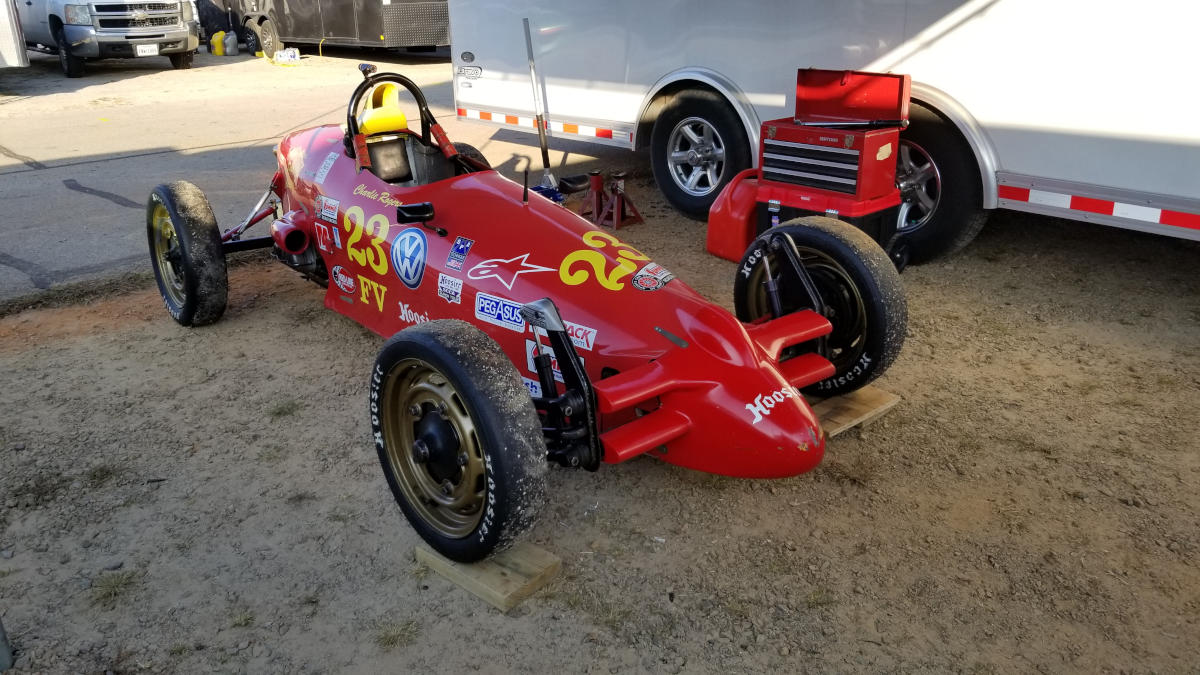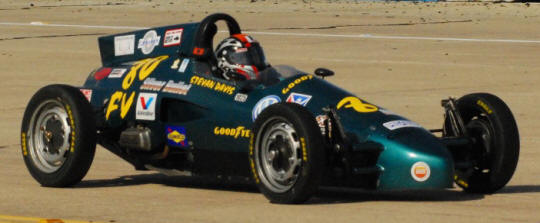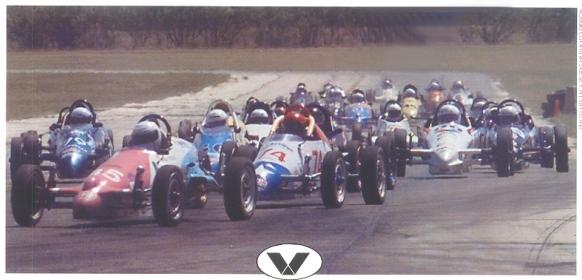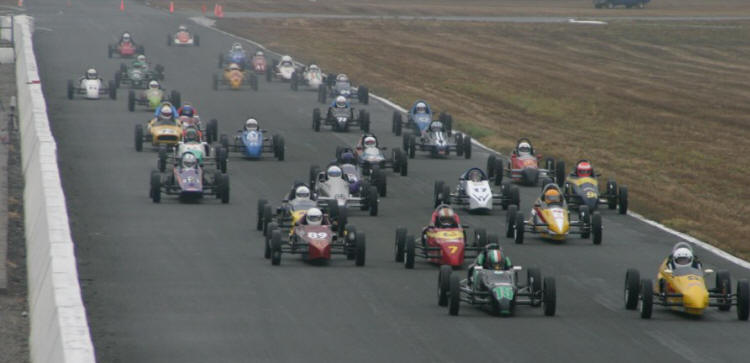About Formula Vee

US Formula Vee is based on the 1963 Volkswagen Beetle. The 1200 cc engine, 4 speed transmission, link pin front suspension, drum brakes and steel wheels are stock, modified stock or or equivalent parts. The chassis is a tube frame design and the body is generally fiberglass or aluminum. By 1966, FV was ranked third out of 17 SCCA classes, in terms of numbers of racers. Amazingly enough, even with there now being some 30+ classes, FV remains 3rd on the overall SCCA list - first in the Open Wheel category. The intention of this class was (and still is) that the average person could race and maintain the car with minimal expenditure, and it has proven itself successful for over 55 years. The class is not only about controlling cost but to enhance competition by controlling technological advances and emphasizing driver ability.
In 2007, a 'Top National' FV ready to race would cost around $20,000. The same car could be bought as a kit (minus the Volkswagen parts but including the motor and transmission) for about $8,000, . Maintenance cost varies significantly and will be mostly related to tires and amortization of the motor rebuilds if you don't have crash damage. On the good side, a lot of crash damage can still be fixed using junk yard parts (and a lot of labor), but 'race ready' parts can be purchased from a number of entrepreneurs around the country if you want to skip some of the labor stuff.


A top running Formula Vee will top out at about 120 mph (190 km/h) and corner at about 1.7 g. The 2019 minimum weight is 1025 pounds with driver. One of the most interesting aspects of the class is that, cars built for the class 30 years ago can still be competitive today - that says a lot about class and rules stability as well as cost containment.
FV is one of the largest classes at the SCCA National Championship Runoffs and, in fact, had the largest car count in 2007. FV was also third in competition number ranking across all SCCA classes in '07, '08 and '09 and continues that reign today. Variants of the Formula Vee rules exist in the Canada, UK, Ireland, Australia, South Africa, Germany and New Zealand (and probably other places). Although conceived and implemented in the US in 1963, the world wide class of FV truly took off in 1966 when Formula Vee took hold in Europe. It proved very popular as a low-cost route into formula racing and quickly gravitated to other parts of the world. A few names you might recognize got their start in FV - Kent Prather, Arie Luyendyk (Dutch Series), Rick Mears, Bobby Rahal, Scott Dixon (New Zealand Series), Niki Lauda (European Series) and many, many more. Today's FV series is still strong and is generally one of the largest classes during any racing weekend.

The best way to learn more about Formula Vee racing, is to offer to offer to help a racer out as a member of their crew. There is always work to be done to get race ready and no one will turn down a free helping hand and you get to get your hands dirty on a real life race car.
Email with your name and location to be put in contact with a local vee driver.
One of the current goals is to create and maintain a registry of all active Vee drivers in the United States - including all sanctioning
bodies beyond SCCA. This website will attempt to be a central repository of information about the class. Please register if
you are an active racer, involved in a team or interested in getting closer to the FV sport.
If you would like to added to the registry, please email The Webmaster
with the following information:
Name:
Location (City and State/Country)
Email address
Phone number
Current or former car make/model
Preferred car number
How long have you been involved in FV?
Are you currently racing or crewing FV?
Sanctioning body